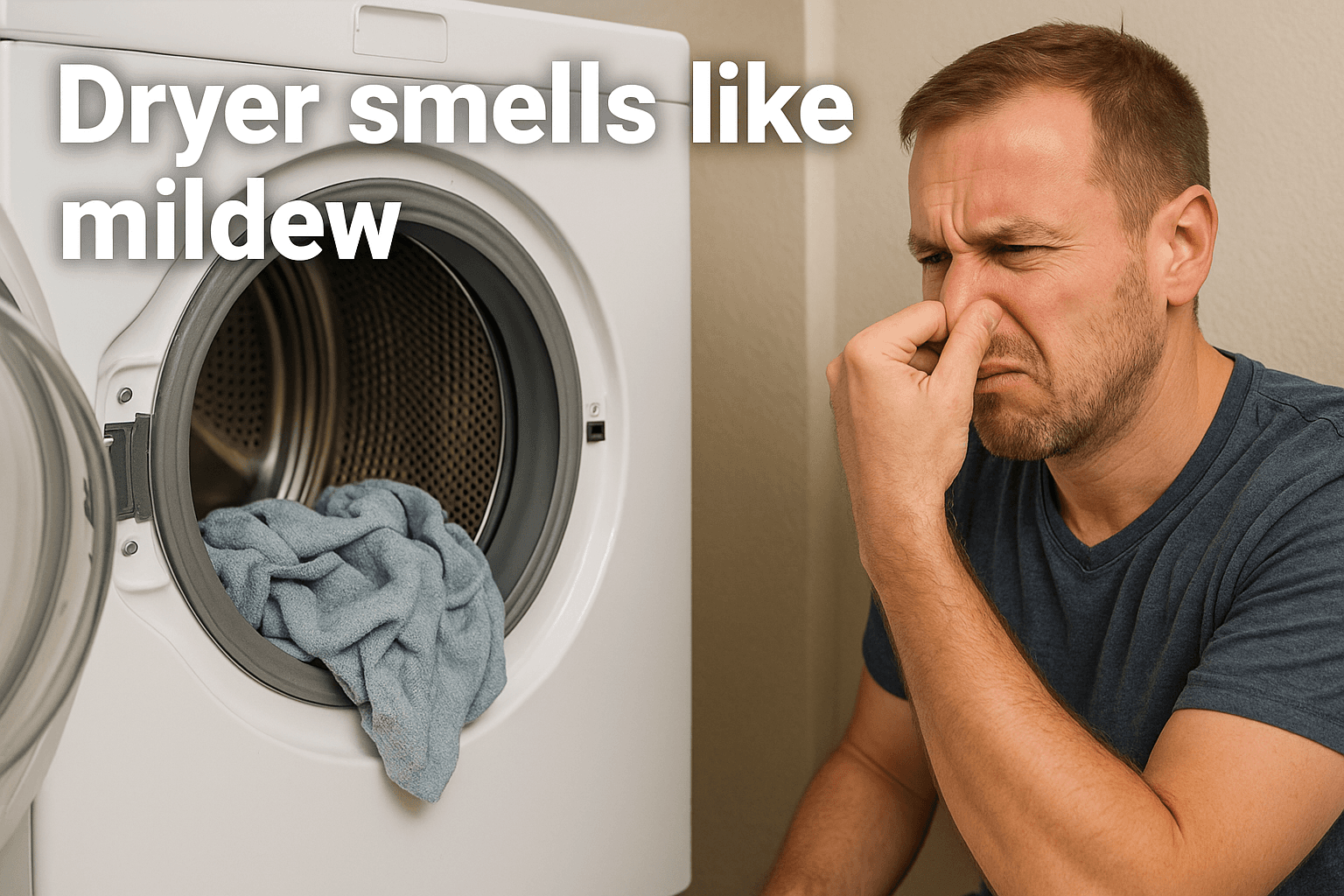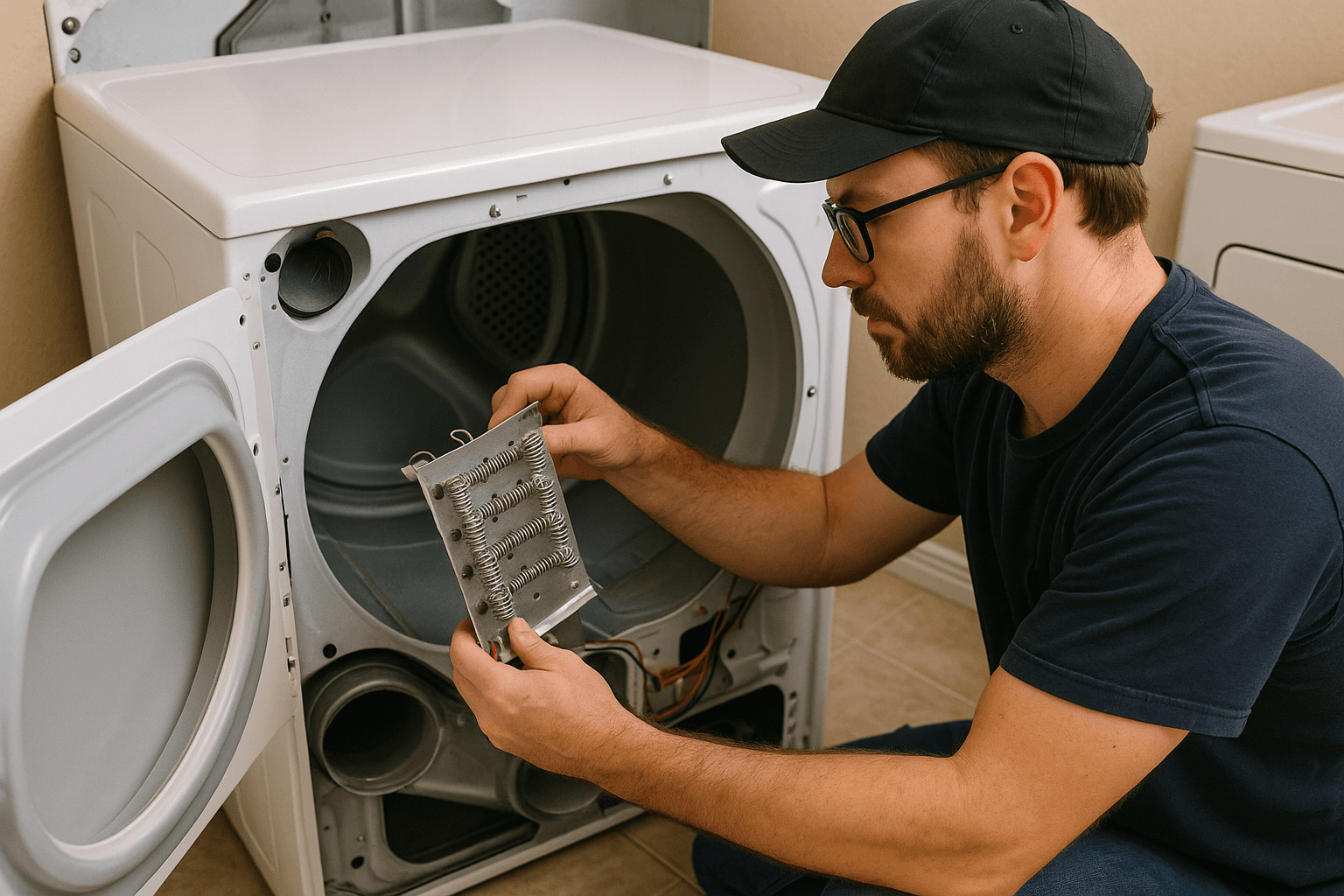Repair help
Dryer Won't Start? Reasons and How to Fix
AZparts Team
Updated on November 20, 2025
5 min read
If your dryer has suddenly stopped working, won’t start, or fails to complete a cycle, the problem might be easier to fix than you think. In many cases, replacing a faulty component can get your dryer running again without the need for expensive repairs. In this guide, we’ll walk you through the 7 most common reasons your dryer isn’t working and what you can do to fix them. We’ll also point you to the specific dryer parts available at AZParts that can help you resolve each issue.

1. The Dryer Isn’t Receiving Power
If you’ve ever asked yourself, “Why won’t my dryer start?”—power supply is the first thing to check. In many cases, the issue is as simple as the machine being unplugged. Dryers can shift slightly during operation, especially if they’re not properly balanced, and this movement may cause the plug to loosen or disconnect entirely.
If the plug is secure, check your home’s circuit breaker. A tripped breaker or a blown fuse could be cutting power to the appliance. Also, inspect the power cord for visible signs of wear or damage. Restoring proper power flow often resolves the issue immediately.
2. Blown Thermal Fuse
The thermal fuse is a critical safety component designed to prevent your dryer from overheating—a potential fire hazard. When the temperature inside the dryer becomes dangerously high, the fuse “blows” to cut off power and stop further heating. If your thermal fuse has blown, it's essential to first identify and resolve the root cause of the overheating. Simply replacing the fuse without addressing the underlying issue could put your appliance—and your home—at risk.
Once the cause is resolved, replacing the thermal fuse is a relatively simple repair for most dryer models. Be sure to consult your owner’s manual or visit the manufacturer's website to confirm the correct replacement part.
How to Replace the Thermal Fuse:
- Unplug the dryer from the power source. Safety first—also consider wearing work gloves to protect your hands.
- Move the dryer away from the wall and remove the back panel using a screwdriver.
- Locate the thermal fuse, which is typically positioned near the exhaust duct.
- Disconnect the wires attached to the blown fuse.
- Using a ¼” nut driver, unscrew and remove the faulty fuse from its housing.
- Install the new thermal fuse, secure it with the mounting screws, and reconnect the wires.
- Reattach the back panel, plug the dryer back in, and test the appliance to ensure it’s operating correctly.
With the right replacement part and proper installation, your dryer should be back in working order—safely and efficiently.
Check out more: What is a Dryer Thermal Fuse?
3. Faulty Door Switch
The dryer door switch is a crucial safety feature that tells the dryer it’s safe to start. If the switch is malfunctioning, the machine may interpret the door as still open and refuse to operate.
You can usually identify this issue if the drum light stays on after you shut the door or if you don’t hear a click when the door closes. These are signs the switch isn’t engaging properly.
Replacing a faulty dryer door switch can be a bit complex and often requires disassembling part of the front panel. We recommend contacting a professional dryer repair technician to properly diagnose the issue and install the correct replacement part.
4. Faulty Start Switch
The dryer start switch is what signals your dryer to begin its cycle. If you press the start button and hear a humming noise—but the drum doesn’t spin—it’s likely not a problem with the start switch. However, if nothing happens at all when you press start, a faulty switch could be the cause.
Diagnosing and replacing a broken start switch involves working with electrical components, so it’s best to consult a qualified appliance technician to ensure a safe and accurate repair.
5. Broken Drive Belt
If the dryer powers on but the drum doesn’t rotate, the dryer drive belt is likely to blame. This belt wraps around the drum and motor pulley to enable spinning. Over time, it can crack, fray, or snap entirely.
If you’re comfortable lifting the top panel of your dryer, you can check the belt yourself. If it appears worn or broken, it will need to be replaced to restore full drying function. Most drive belts are affordable and widely available for DIY replacements, but professional help ensures correct installation.
6. Obstruction or Failure in the Drive Motor
The dryer drive motor powers both the drum rotation and the blower wheel. If you press start and hear a humming noise—but nothing moves—or you can’t rotate the drum by hand, there may be a problem with the motor or an obstruction blocking it.
In some cases, the dryer may even start normally but then shut off mid-cycle (typically after 15–20 minutes), indicating the motor is overheating or failing under load.
First, check the blower wheel for clogs like lint, socks, or debris. If everything is clear and the motor still struggles, it likely needs to be replaced.
7. Shorted Main Control Board
If your dryer is completely unresponsive or displays erratic behavior, a shorted main control board could be the cause. Look for visible signs of damage like burn marks, corrosion, or broken components on the board.
Because the main control board manages many internal functions, replacing it is a delicate job that involves advanced electrical work. If you suspect this is the issue, it’s safest to contact a repair technician.
Final Thoughts
When your dryer stops working, it doesn’t always mean you need a new appliance. In many cases, identifying the faulty part and replacing it can restore your machine to full function. At AZParts, we offer a wide selection of genuine dryer parts — from fuses and motors to control boards — to help you fix your dryer quickly, affordably, and safely.
Contact Information:
- Address: 8 The Green, Ste A, Dover, Delaware 19901-3618, United States
- Email: support@azparts.com
Your dryer may encounter other errors:
Dryer
Further Reading
Further Reading





